After a bit more experimenting/research I realized from this post
How to make custom CoordinatorLayout.Behavior with parallax scrolling effect for google MapView? that a big part of my problem was not understanding the parallax effect, which translates views rather than shrinking them. Once I realized that, it was trivial to create a custom behavior that would apply the parallax to my main view when the bottom sheet expanded:
public class CollapseBehavior<V extends ViewGroup> extends CoordinatorLayout.Behavior<V>{
public CollapseBehavior(Context context, AttributeSet attrs) {
super(context, attrs);
}
@Override
public boolean onDependentViewChanged(CoordinatorLayout parent, V child, View dependency) {
if (isBottomSheet(dependency)) {
BottomSheetBehavior behavior = ((BottomSheetBehavior) ((CoordinatorLayout.LayoutParams) dependency.getLayoutParams()).getBehavior());
int peekHeight = behavior.getPeekHeight();
// The default peek height is -1, which
// gets resolved to a 16:9 ratio with the parent
final int actualPeek = peekHeight >= 0 ? peekHeight : (int) (((parent.getHeight() * 1.0) / (16.0)) * 9.0);
if (dependency.getTop() >= actualPeek) {
// Only perform translations when the
// view is between "hidden" and "collapsed" states
final int dy = dependency.getTop() - parent.getHeight();
ViewCompat.setTranslationY(child, dy/2);
return true;
}
}
return false;
}
private static boolean isBottomSheet(@NonNull View view) {
final ViewGroup.LayoutParams lp = view.getLayoutParams();
if (lp instanceof CoordinatorLayout.LayoutParams) {
return ((CoordinatorLayout.LayoutParams) lp)
.getBehavior() instanceof BottomSheetBehavior;
}
return false;
}
}
Then in my layout XML, I set the app:layout_behavior of my main view to be com.mypackage.CollapseBehavior and the app:layout_anchor to be my bottom sheet view so that the onDependentViewChanged callback would trigger. This effect was much smoother than trying to resize the view. I suspect returning to my initial strategy of using a BottomSheetBehavior.BottomSheetCallback would also work similarly to this solution.
Edit: per request, the relevant XML is below. I add a MapFragment into @+id/map_container at runtime, though this should also work with anything you drop into that container like a static image. The LocationListFragment could likewise be replaced with any view or fragment, so long as it still has the BottomSheetBehavior
<android.support.design.widget.CoordinatorLayout
android:layout_width="match_parent"
android:layout_height="match_parent"
android:id="@+id/fragment_coordinator">
<FrameLayout
android:id="@+id/map_container"
android:layout_width="match_parent"
android:layout_height="wrap_content"
android:layout_gravity="top"
app:layout_anchor="@+id/list_container"
app:layout_behavior="com.mypackage.behavior.CollapseBehavior"/>
<fragment
android:name="com.mypackage.fragment.LocationListFragment"
android:layout_width="match_parent"
android:layout_height="match_parent"
android:id="@+id/list_container"
app:layout_behavior="android.support.design.widget.BottomSheetBehavior"/>
</android.support.design.widget.CoordinatorLayout>
